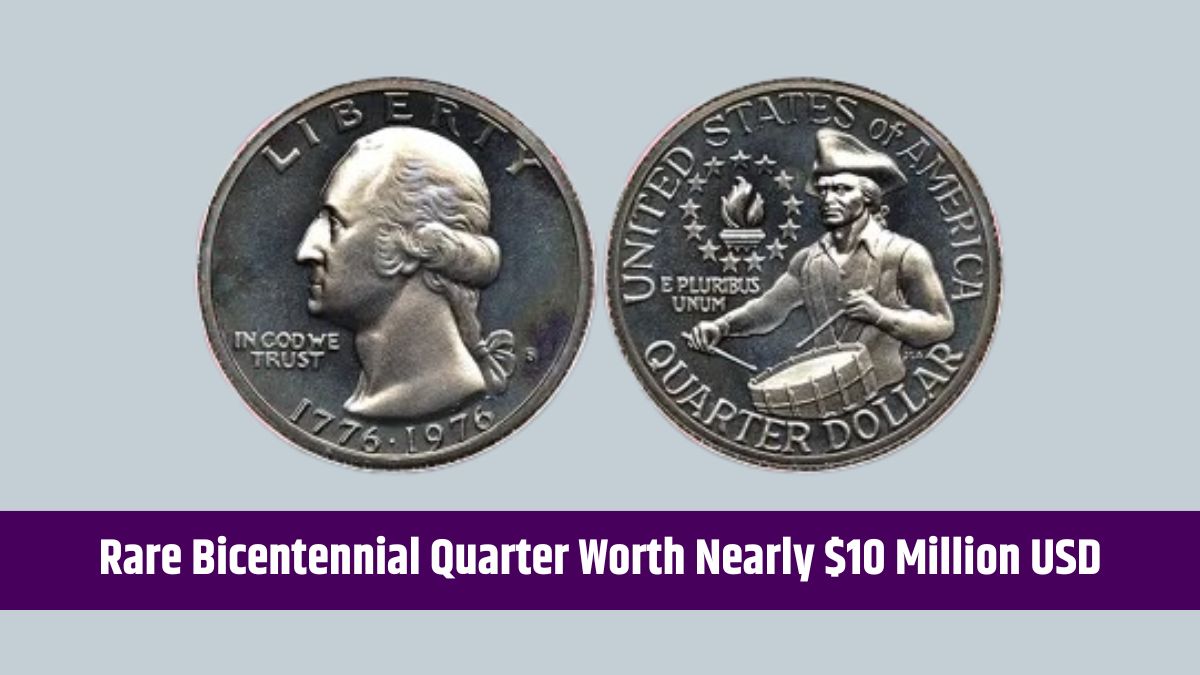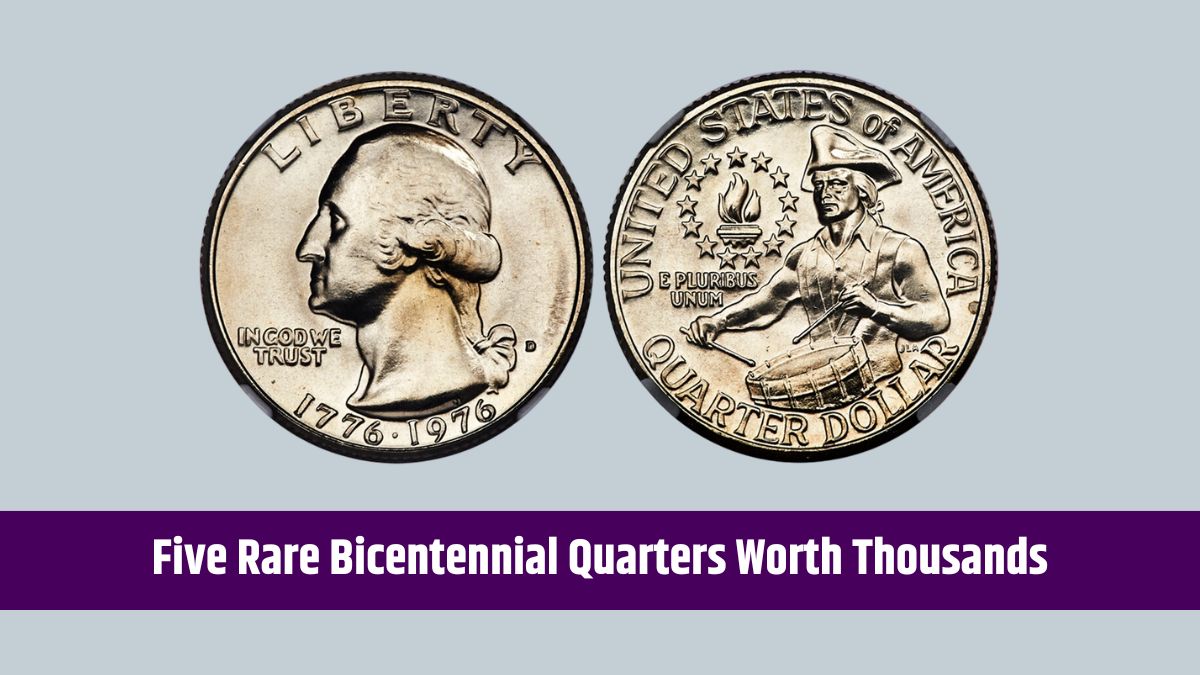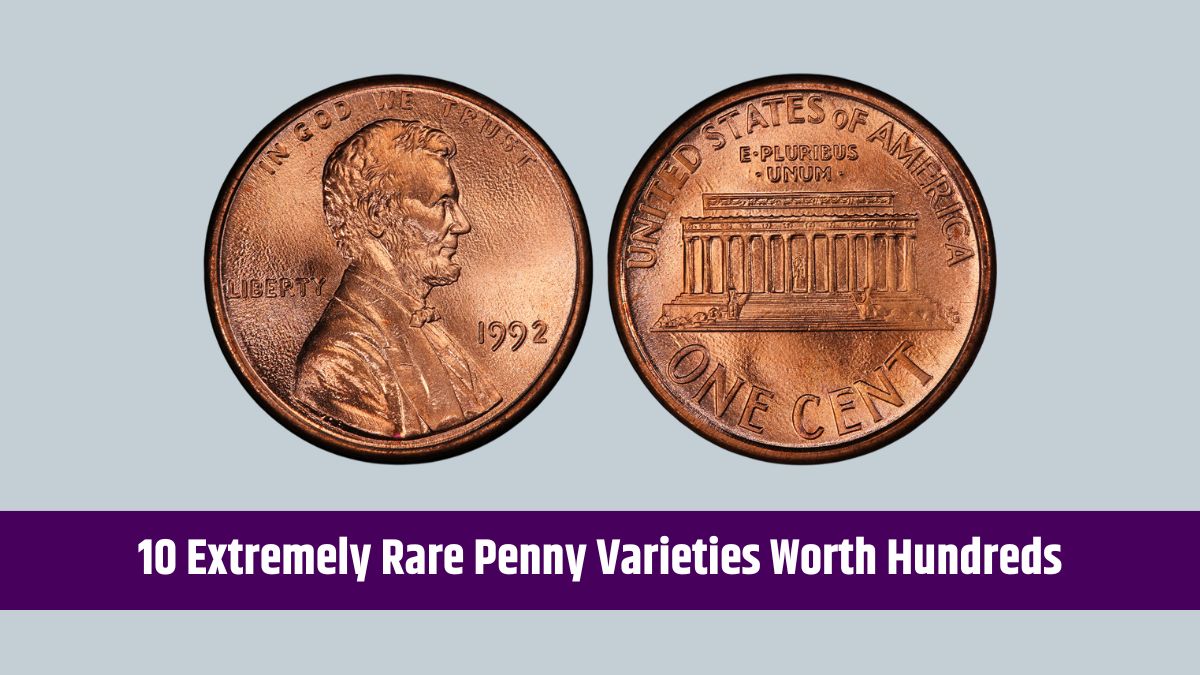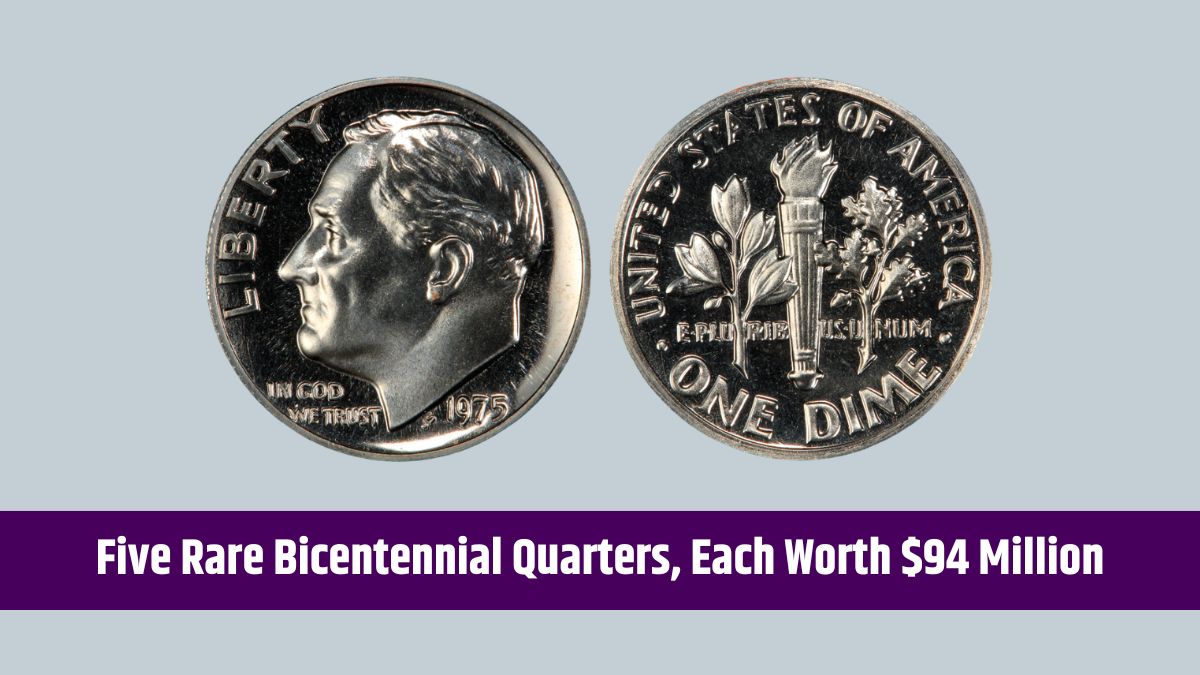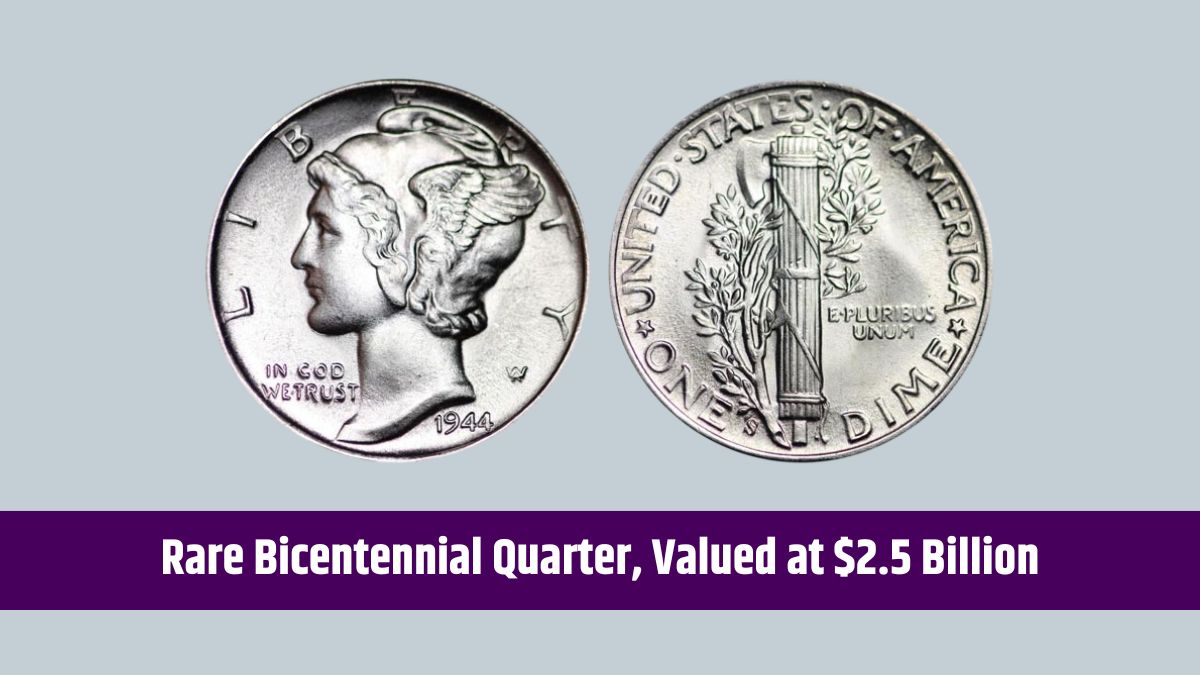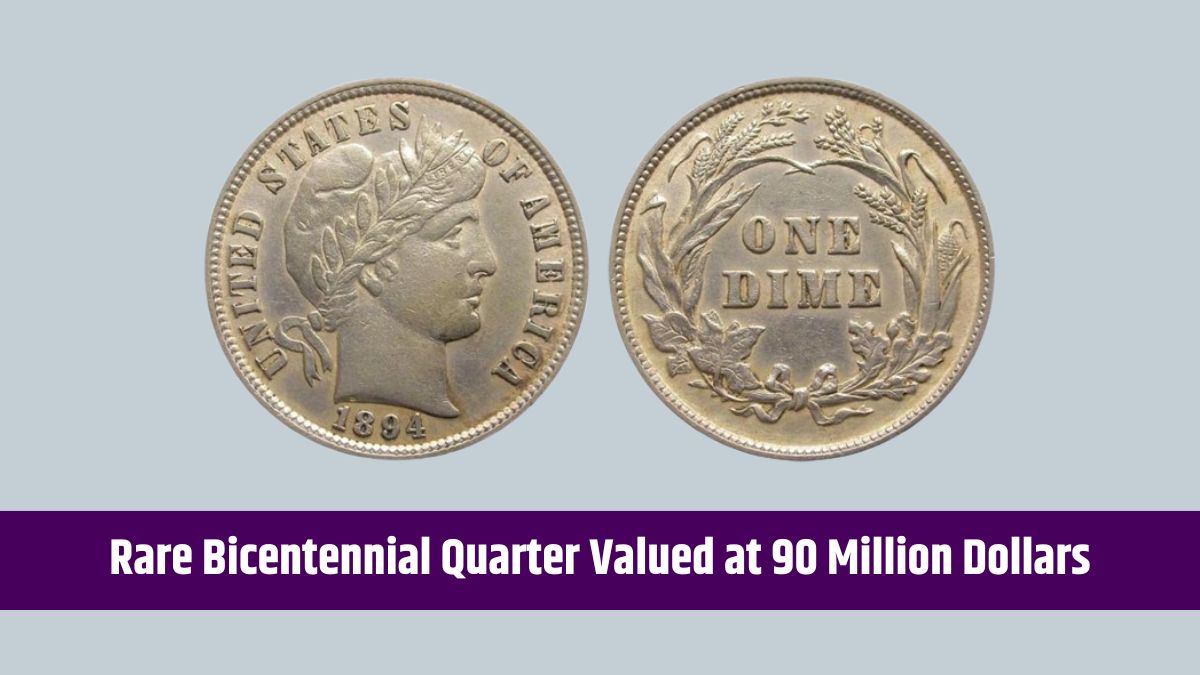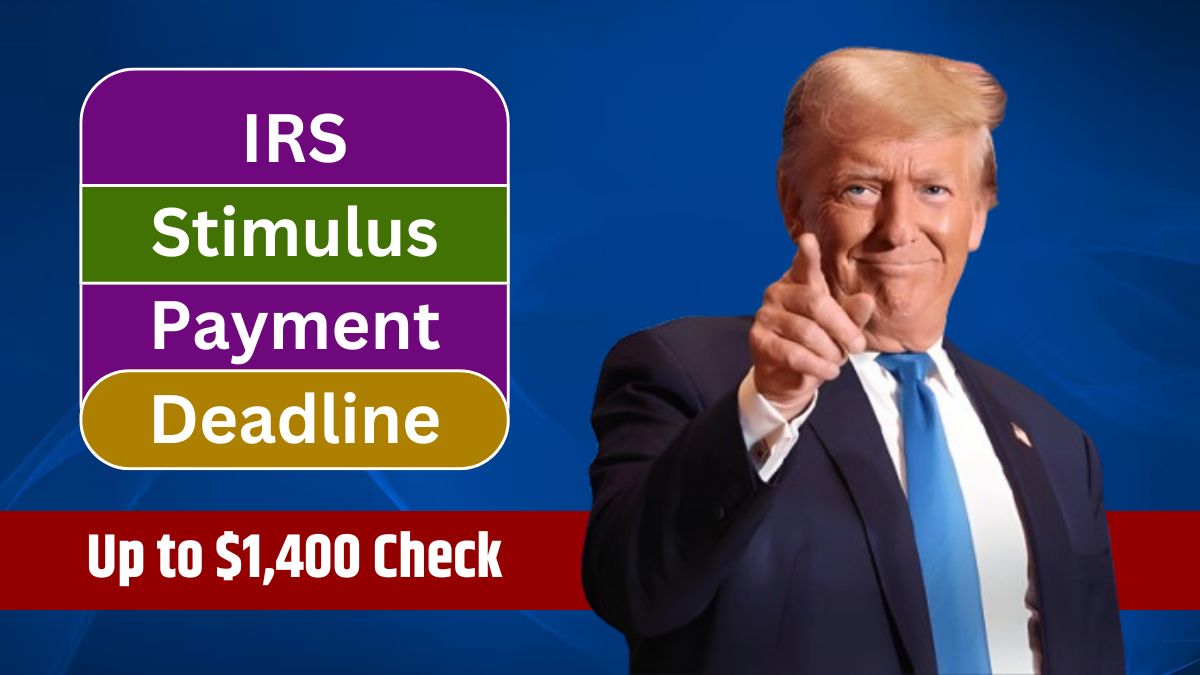The idea that a Bicentennial Quarter could be worth nearly $10 million might sound too good to be true, but rare versions and error coins have been known to fetch staggering prices in the numismatic world.
Minted in 1976 to celebrate the 200th anniversary of the United States, these quarters feature a special reverse design with a drummer boy and thirteen stars representing the original colonies. While most are worth just 25 cents, a few rare varieties and error coins have become incredibly valuable. Let’s look into some of the most sought-after Bicentennial Quarters and their potential values.
1976-D Double Die Obverse Quarter
Why is it valuable?
This rare variety is known for a doubling effect on the obverse (front) of the coin, especially around the date and lettering. This error occurs when the coin is struck twice slightly out of alignment.
Value:
Depending on condition, these quarters can sell for anywhere from a few hundred to several thousand dollars. In mint condition with clear doubling, they have been known to sell for over $10,000.
1976-S Silver Proof Bicentennial Quarter
Why is it valuable?
Unlike most Bicentennial Quarters, which were made from a copper-nickel blend, the 1976-S Silver Proof Quarter was struck using a special 40% silver composition. These were only available in proof sets, making them rarer than standard quarters.
Value:
Depending on their condition, silver proof quarters can be worth over $500, and some pristine examples have sold for even more.
1976-D No Mint Mark Quarter
Why is it valuable?
Most 1976-D quarters feature a “D” mint mark, indicating they were struck at the Denver Mint. However, a rare error resulted in some quarters being produced without the mint mark, making them highly collectible.
Value:
If found in great condition, these error coins can sell for anywhere from a few hundred to a few thousand dollars.
High-Grade Bicentennial Quarters (MS-67 or Higher)
Why is it valuable?
Coins are graded based on their condition, with MS-67 or higher being considered near-perfect. Collectors are willing to pay premium prices for these exceptionally well-preserved coins.
Value:
High-grade Bicentennial Quarters can sell for $5,000 or more, depending on rarity and demand.
1976 Bicentennial Quarter with Off-Center Strikes
Why is it valuable?
If the coin die is misaligned during minting, the design may be struck off-center, creating a noticeable and collectible error.
Value:
Depending on the degree of the off-center strike, these quarters can be worth anywhere from a few hundred to several thousand dollars.
Bicentennial Quarter with Reverse Striking Errors
Why is it valuable?
Reverse striking errors occur when the back (reverse) die is misaligned, leading to design flaws. Some of these errors are incredibly rare and highly sought after.
Value:
Depending on the uniqueness of the error, these quarters have been known to sell for over $500,000, making them some of the most valuable Bicentennial Quarters ever observed.
The Fascination of Bicentennial Quarters
While most Bicentennial Quarters are only worth their face value, rare errors and high-grade specimens can be worth thousands—or even millions—of dollars. For coin collectors, the thrill lies in observing one of these hidden treasures.
If you come across a Bicentennial Quarter, it might be worth examining closely—you never know if you have a rare and valuable gem in your collection!
FAQs
How do I know if my Bicentennial Quarter is valuable?
Check for errors, silver content, mint marks, or high-grade condition.
What makes the 1976-D Double Die Quarter rare?
It features a doubling effect on the date and lettering due to a minting error.
Are all Bicentennial Quarters valuable?
No, most are worth 25 cents, but rare errors and high grades can be valuable.
Where can I sell a rare Bicentennial Quarter?
You can sell at coin auctions, online marketplaces, or through a coin dealer.
What is the most valuable Bicentennial Quarter ever sold?
Some rare error quarters have sold for over $500,000.
